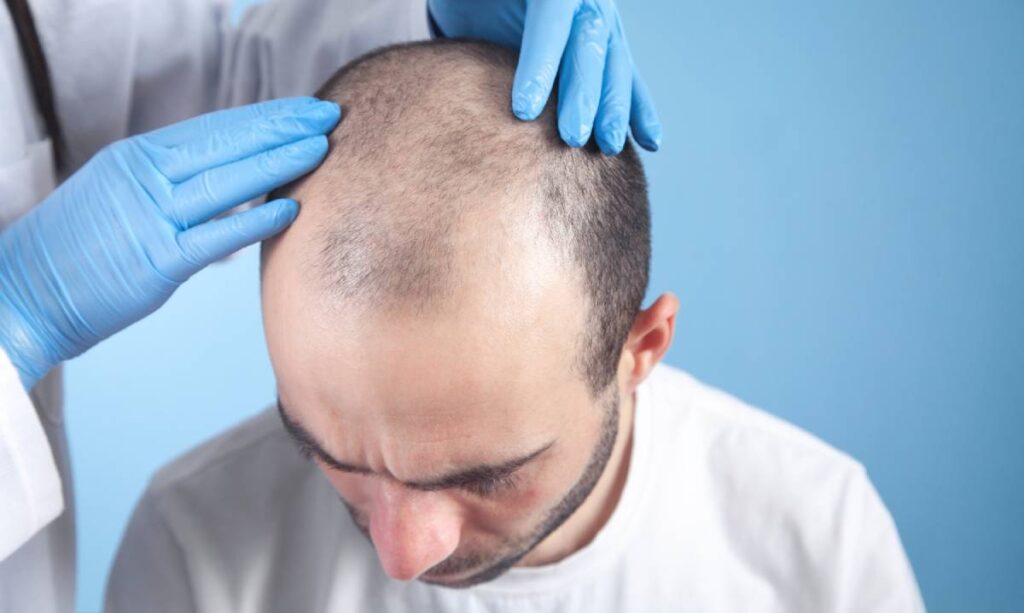Understanding Hair Transplantation
Hair loss is a common issue that affects millions of people worldwide. Hair transplantation is a popular solution that offers a permanent solution to this problem by transplanting hair follicles from one area of the body to another. This procedure is particularly effective for individuals experiencing male or female pattern baldness. With advanced techniques like Follicular Unit Extraction (FUE) and Follicular Unit Transplantation (FUT), hair transplantation has become a highly effective and reliable procedure. It’s essential to understand the procedure, the expected results, and the recovery process before deciding if it’s right for you. The right candidate for a hair transplant typically has enough healthy hair follicles to be used for the procedure and is in overall good health.
Determining if You Are a Good Candidate for Hair Transplantation
Before undergoing hair transplantation, it’s essential to assess whether you are a good candidate for the procedure. Generally, the best candidates are individuals with significant hair loss in certain areas of the scalp while still having healthy hair follicles in other parts of the body. The ideal candidate for hair transplantation should also be in good health, as medical conditions may affect the healing process or the success of the surgery. Age is another important factor; while hair transplants can be done at almost any age, younger patients may not be the best candidates since their hair loss may not have stabilized. Consulting with a certified hair transplant surgeon is crucial in determining if you’re a good fit for the procedure.
The Benefits of Hair Transplantation
There are several benefits of hair transplantation that make it an appealing choice for those dealing with hair loss. One of the biggest advantages is that it offers permanent, natural-looking results. Unlike other hair restoration methods, such as medications or wigs, hair transplantation provides a lasting solution by relocating healthy hair follicles to areas of thinning or balding. Over time, the transplanted hair continues to grow, and patients can treat it just like their natural hair. This means that the new hair can be styled, cut, and treated as desired. Additionally, hair transplantation typically boosts self-esteem and confidence, as individuals regain a more youthful and fuller appearance.
What to Expect During the Hair Transplantation Procedure
The hair transplantation procedure is relatively straightforward, but it’s important to understand the steps involved. It is usually performed under local anesthesia, which numbs the area where the surgeon will work. There are two main techniques used: FUE and FUT. In FUE, individual hair follicles are harvested and transplanted, while FUT involves removing a strip of scalp skin, dissecting it into smaller grafts, and transplanting those into the recipient area. The procedure can take several hours depending on the number of grafts required. After the surgery, you may experience some swelling, redness, and minor discomfort, which is temporary. Recovery time typically lasts around 7 to 10 days, and most patients can return to their normal activities within a week.
Recovery and Aftercare Following Hair Transplantation
After the hair transplantation procedure, patients need to follow specific aftercare instructions to ensure the best possible results. During the recovery period, it’s common to experience some swelling and mild pain, which can usually be controlled with prescribed pain medication. The transplanted hair will begin to shed in the first few weeks, but this is part of the normal process. New hair will start growing in about 3 to 4 months, with full results typically visible in 12 to 18 months. During recovery, it’s crucial to avoid activities that could put stress on the scalp, such as intense physical exercise, direct sun exposure, or wearing tight hats. Following the aftercare instructions is essential to ensuring the success of the hair transplantation and achieving optimal results.
Potential Risks and Side Effects of Hair Transplantation
As with any surgical procedure, hair transplantation carries some risks and potential side effects. Although complications are rare, some individuals may experience issues such as infection, bleeding, or scarring. There’s also a possibility of unnatural-looking hair growth or poor graft survival if the procedure is not performed correctly. Additionally, some patients may experience “shock loss,” which refers to the temporary shedding of both transplanted and existing hair. This can be distressing, but it is generally temporary, and new hair will grow back within a few months. It’s essential to choose an experienced, qualified surgeon to minimize these risks and ensure a successful outcome. Discussing potential risks with your surgeon during the consultation phase can help you make an informed decision.
Long-Term Results and Maintenance of Hair Transplantation
The results of hair transplantation are generally permanent, but the overall success of the procedure depends on several factors. The transplanted hair continues to grow naturally, and patients can treat it as they would their original hair. However, it’s important to note that hair loss may continue in other areas of the scalp that were not treated during the surgery. Maintaining a healthy lifestyle, including eating a balanced diet and managing stress, can support long-term hair health. Some patients may opt for additional procedures in the future to address ongoing hair loss or improve the density of their transplanted hair. Regular check-ups with your surgeon will ensure that the results of hair transplantation are maintained and that any concerns are addressed promptly.
Conclusion
In conclusion, hair transplantation is an effective, long-term solution for individuals experiencing hair loss. With benefits like natural-looking results, improved self-esteem, and permanent hair restoration, it can dramatically boost your confidence and quality of life. However, it’s essential to understand the procedure, recovery process, and potential risks before deciding if hair transplantation is the right choice for you. Consulting with a qualified surgeon and setting realistic expectations is key to ensuring that the procedure aligns with your goals. If you are considering this option, take the time to explore your choices, understand the procedure in-depth, and make an informed decision to restore not just your hair but also your confidence.
Frequently Asked Questions
- How long does a hair transplantation procedure take?
- Typically, the procedure can take anywhere from 4 to 8 hours, depending on the number of grafts required.
- Is hair transplantation permanent?
- Yes, the transplanted hair is permanent, though natural hair loss may continue in untreated areas.
- Will I need to take medications after the procedure?
- Some patients are advised to take medications like minoxidil or finasteride to maintain hair growth and prevent further loss.
- Is hair transplantation painful?
- Most patients experience minimal discomfort due to local anesthesia, and any post-surgery pain is typically mild.
- What are the risks associated with hair transplantation?
- Risks include infection, scarring, unnatural hair growth, and shock loss, though these are rare with proper care.
- How soon will I see results after hair transplantation?
- It typically takes about 3 to 4 months for new hair to start growing, with full results visible after 12 to 18 months.
- Can I return to work after the surgery?
- Most patients can return to work within a few days, but strenuous activities should be avoided for about a week.
- What type of hair loss is suitable for hair transplantation?
- Hair transplantation is most effective for male and female pattern baldness and other permanent forms of hair loss.
- Is there any downtime after hair transplantation?
- There is minimal downtime, with most patients resuming normal activities within a few days, though rest is important initially.
- How much does hair transplantation cost?
- The cost varies widely, but it typically ranges from $4,000 to $15,000, depending on the procedure and clinic.












